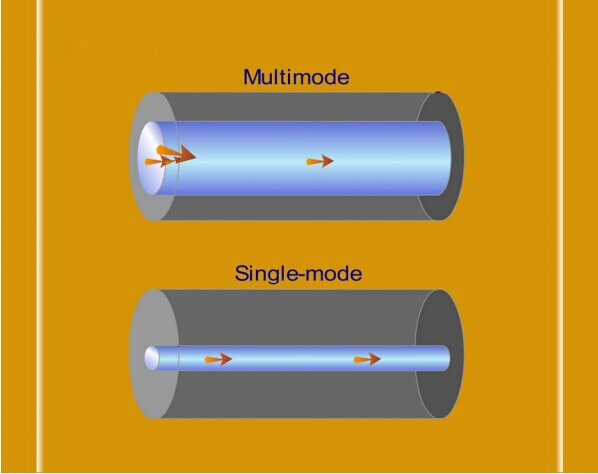Introduction for Optical Fiber
In 1870, John Tyndall demonstrated the experiment of total internal reflection which proved that light can follow a curved path to shine around corners. This stimulates the later discovery that light will be totally reflected at the surface when it passes from air into glass at a right angle. This means that fiber made of glass can be used to transport light, thus the term optical fiber emerged. Since 1980s, optical fiber cable is gradually replacing copper cable as the mainstream medium of transmission in telecommunication network.
An optical fiber is a flexible, transparent fiber made of glass or plastic which can carry light from one end to the other. Its diameter is slightly thicker than that of a human hair. Optical fibers typically consist of a transparent core surrounded by a transparent cladding material with a lower index of refraction. Light is kept in the core by the phenomenon of total internal reflection which enables the fiber to act as a waveguide. Optical fibers are used frequently as a means to transmit light between the two ends of the fiber and widely applied in fiber-optic communications, where they permit transmission over longer distances and at higher bandwidths (data rates) than wire cables. Fiber cables gradually replace copper cables primarily because there is less loss over a long-distance transmission on fiber cables. Besides, fibers are immune to electromagnetic interference, making them superior to metal wires. Optical fiber can be divided into various types according to different criteria. For instance, according to the transmission mode over the fiber, it mainly has two types: single mode fiber and multi-mode fiber.
A single mode optical fiber (SMF) is an optical fiber designed to carry only one mode (or path) for light to travel. A typical single mode optical fiber has a core diameter between 8 and 10.5 µm and a cladding diameter of 125 µm. Only one mode of light (typically 1310 or 1550nm) will propagate through SMF. It carries higher bandwidth than multimode fiber, but requires a light source with a narrow spectral width. A single mode fiber cable is used in many applications where data is sent at multi-frequency (WDM Wave-Division-Multiplexing) so that only one cable is needed. Single mode fiber gives you a higher transmission rate and up to 50 times longer distance than multi-mode fiber, but it costs more. The small core and single light-wave of SMF virtually eliminate any distortion that could result from overlapping light pulses, providing the least signal attenuation and the highest transmission speeds of any fiber cable type.
A multi-mode optical fiber (MMF) is a kind of optical fiber designed to carry multiple light rays or modes concurrently, each at a slightly different reflection angle within the optical fiber core. MMF has much larger core diameter, typically 50 to100 µm. Multi-mode fiber transmits signals through multimode paths in its larger core. Multi-mode optical fiber can cause signal distortion at the receiving end in long-distance transmission, making signals unclear and incomplete. Due to the high dispersion and attenuation rate, MMF is mostly used in communication over short distances. However, compared to SMF, MMF is a more flexible and cost-effective solution for a broad range of data rates from 10 Mb/s to 100 Gb/s systems.

Fiber optic cable has lots of types, depending on its own functionality and where it will be installed. Where to buy fiber optic cable? As the best OEM fiber optic cable manufacturer, Fiberstore provides a wide range of high-quality optical fiber cables with detailed specifications displayed for your convenient selecting. We offer our customers high-performance and cost-effective products to fulfill their requirements, contributing this way to our customer's success and satisfaction.